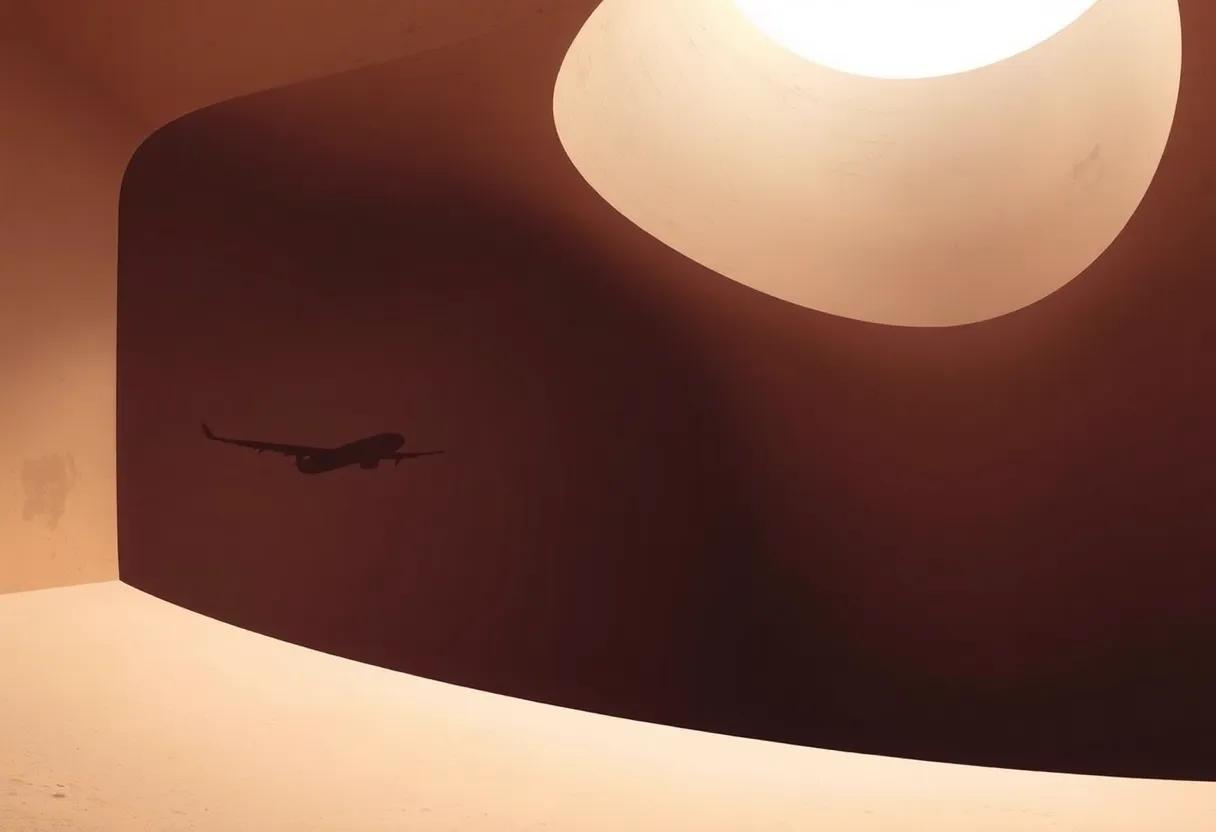In the shadowy recesses of Kevin Brooks’ “The Bunker Diary,” a gripping narrative unfolds that challenges our perceptions of captivity, human resilience, and the complex interplay of solitude and survival. This novel, a haunting exploration of isolation, thrusts readers into the heart of a chilling scenario: a young protagonist ensnared in a seemingly impenetrable bunker, grappling with the psychological and physical ramifications of confinement. “Survival and Solitude” invites us to embark on a deep dive into the psychological layers of Brooks’ work, dissecting the emotional currents that flow thru each page. As we navigate the stark and often harrowing landscape of the narrative, we are encouraged to examine not only the lengths to which individuals will go to preserve their humanity, but also the profound impact of solitude on the human spirit. Join us as we unravel the intricacies of this powerful tale, where survival is not just a matter of endurance, but an exploration of what it truly means to be alone.
Exploring the Depths of Despair in The bunker Diary
In The Bunker Diary, Kevin Brooks masterfully plunges readers into a harrowing exploration of psychological turmoil and isolation.as the protagonist, Linus, grapples with his sudden captivity within a claustrophobic bunker, the weight of despair thickens like the air around him. His interactions with the sparse surroundings—a dimly lit space filled with remnants of past prisoners—serve to magnify his sense of abandonment. The novel deftly navigates themes of survival and the human spirit, as Linus clings to the remnants of his sanity by documenting his daily existence in a diary. this introspective narrative enables readers to intimately experience the emotional rollercoaster that accompanies such profound solitude, as hope flickers like a dying candle in the oppressive darkness.
As he wrestles with despair, the stark realities of his situation force Linus into a deeper self-reflection. In this unforgiving setting, he confronts the haunting thoughts that emerge when stripped of societal norms and comforts.The bunker becomes a microcosm for examining broader human experiences, raising questions about identity and resilience.brooks employs stark imagery and poignant prose to evoke feelings of claustrophobia, not only in the physical sense but also in the mental and emotional realms. Here are some key elements that shape this exploration:
- Isolation: The profound solitude amplifies Linus’s internal struggle.
- Desperation: Each day is marked by a relentless fight against despair.
- Self-Discovery: Captivity forces an exploration of Linus’s innermost fears and desires.
| Element | Description |
|---|---|
| Environment | Dark, confined space symbolizes entrapment. |
| Psychological depth | insight into mental states during confinement. |
| Hope vs. Despair | The battle between letting go and holding on. |
A Psychological Odyssey: Unpacking Character motivations

In The Bunker Diary, Kevin Brooks crafts a gripping narrative that immerses readers in the mind of a teenager grappling with isolation and survival.The protagonist, a boy named Linus, is thrust into a harrowing situation that forces him to confront not only the immediate peril of his captivity but also the psychological weight of solitude. As he navigates the claustrophobic confines of the bunker, Linus’s motivations evolve; he oscillates between despair and a will to survive. This emotional turbulence reveals key driving forces behind his actions, such as:
- The instinct for survival: Linus’s primal need to live drives him to make tough choices.
- Search for control: In a scenario where power is stripped away, he seeks any semblance of agency.
- Hope against the odds: Despite overwhelming fear, his flickering hope urges him to hold on.
As the story unfolds, Brooks masterfully peels back the layers of Linus’s psyche, exposing vulnerabilities that resonate universally. The tension between his inner turmoil and external threats creates a compelling exploration of human resilience. linus’s reflections on what it means to be human in the face of relentless isolation prompt readers to consider various psychological dimensions, including the effects of confinement on emotional stability. Below is a table summarizing the psychological themes portrayed in Linus’s journey:
| Theme | Description |
|---|---|
| Isolation | The profound impact of being cut off from society. |
| Fear | how fear shapes decision-making and reaction. |
| Identity | The struggle to maintain a sense of self in captivity. |
Atmosphere and Isolation: The role of Setting in Survival

The setting of The Bunker Diary is not just a backdrop; it’s a character in its own right, shaping the protagonist’s journey and emotional landscape. The underground bunker, with its claustrophobic walls and dim lighting, embodies the essence of isolation.It strips away the comforts of the outside world, leaving the characters to grapple with their fears and desires in a confined space. The atmosphere is thick with tension and uncertainty, creating an immersive experience that mirrors the internal struggles of the protagonist. elements such as the muffled sounds, the stale air, and the oppressive darkness contribute to a sense of dread that permeates the narrative, making survival feel both precarious and essential.
As the story unfolds, the bunker becomes a microcosm of society, highlighting the delicate balance between survival and despair.The author cleverly uses this setting to explore themes of human connection and the instinct to endure amid isolation. Within the stark environment, characters engage in a constant battle against the psychological toll of their confinement. The confined space serves to heighten their vulnerabilities, leading to a rich exploration of their relationships and struggles. Here, survival is not merely about physical endurance; it is indeed also an emotional journey that prompts reflections on morality, hope, and the human spirit’s resilience. The volatile atmosphere created in this enclosed space pushes each character to their limits, revealing the profound impact of their surroundings on their psyche.
The Art of survival: Themes of Resourcefulness and Ingenuity

In ‘The Bunker Diary’, Kevin Brooks masterfully explores the theme of resourcefulness through the eyes of the protagonist, a young boy imprisoned in a mysterious bunker. Forced to confront his dire circumstances, the character transforms desperation into creativity, showcasing how survival can frequently enough hinge on one’s ability to think outside the box. His struggle is depicted through acts such as:
- Improvisation: Utilizing limited supplies to create tools and find sustenance.
- Adaptation: Learning to read the environment and adjust strategies based on available resources.
- Ingenuity: Crafting various mechanisms to communicate his plight, despite overwhelming isolation.
brooks delves into the psychological aspects of solitude and its impact on ingenuity. As the protagonist grapples with the mental strain of confinement, he learns that survival is not merely a physical endeavor; it is indeed intertwined with mental resilience. The narrative underscores this connection through key elements such as:
| Theme | Description |
|---|---|
| Isolation | Encourages inner reflection and self-reliance. |
| hope | Acts as a driving force that spurs inventive behaviors. |
| Despair | Challenges the character to innovate, ultimately leading to breakthroughs in survival tactics. |
The Narrative Structure: Unraveling the Storytelling Technique

At the heart of Kevin Brooks’ ‘The Bunker Diary’ lies a hauntingly intricate narrative structure that captivates readers and captures the essence of its protagonist’s harrowing journey. Rather than adhering to a linear progression, the story unfolds through a series of diary entries, each offering a raw glimpse into the psyche of the trapped youth, Linus. This fragmentation mirrors the disorientation and anxiety experienced by Linus, allowing readers to immerse themselves in his confusion and despair. The choice of diary format not only provides intimacy but also enhances the sense of isolation, drawing readers into the claustrophobic confines of the bunker and the solitude that envelops linus.
Brooks cleverly utilizes this structure to build suspense and tension, escalating the stakes as each entry reveals more about Linus’s character and the psychological toll of his confinement. The episodic nature of the narrative allows for moments of introspection interspersed with bursts of frantic desperation, creating a rhythm that keeps the reader engaged.Within this framework, themes of survival, trust, and the essence of human connection are poignantly explored. The following table highlights key elements that contribute to the overall effectiveness of the storytelling technique:
| Element | Significance |
|---|---|
| Diary Format | Provides a personal insight into Linus’s thoughts and feelings. |
| Fragmentation | mirrors the confusion and disorientation of captivity. |
| Intimate Confessionals | Establishes a deep emotional connection between Linus and the reader. |
| Suspense and Tension | Keeps readers on edge, questioning Linus’s fate and choices. |
Voices of the Captives: Understanding the Importance of Perspective

In Kevin Brooks’ The Bunker Diary, the intricacies of human experience are laid bare through the fragmented thoughts of its young protagonist, Linus. Living in isolation, he confronts the stark realities of captivity, peeling back the layers of his own psyche. This unique perspective is essential, as it invites readers to feel the weight of solitude and the unsettling nature of survival. Through Linus’ eyes, we explore:
- Internal Conflict: The struggle to maintain hope amidst despair.
- Human Connection: The lingering need for companionship, even in the most dire situations.
- Resilience: The innate drive to adapt and find meaning, even when circumstances feel insurmountable.
brooks expertly crafts Linus’ internal monologue, allowing readers to witness the evolution of his thoughts and emotions.As the narrative unfolds, it becomes clear that understanding one’s captivity goes beyond physical boundaries; it delves into a psychological labyrinth where fear, hope, and introspection coexist. The contrast between Linus’ memories and his harsh reality emphasizes how crucial it is to listen to the voices of those who have been silenced, revealing a deeper understanding of the human condition:
| Theme | Significance |
|---|---|
| Isolation | Highlights the effect of loneliness on mental health |
| Survival | Shows the instinctual drive to live against all odds |
| Memory | Illustrates the power of recollection in forming identity |
Emotional Resonance: The Impact of Solitude on Mental Health

In the depths of Kevin Brooks’ unsettling narrative,the protagonist’s experience of segregation evokes a profound exploration of human emotions.As he navigates life within the confines of a bunker, the contrast between isolation and the desire for connection sharpens the raw edges of sanity and despair. The character grapples with an ensemble of feelings that surface amidst solitude, revealing the intricate relationship between isolation and emotional well-being.Issues such as anxiety, depression, and the yearning for companionship become magnified, presenting a vivid illustration of how loneliness can warp one’s mental state.This internal chaos prompts readers to reflect on their experiences with solitude, highlighting how isolation can lead to both self-discovery and inner turmoil.
Moreover, the psychological implications of prolonged solitude often unfold as a double-edged sword. On one hand, moments of introspection in isolation can foster creativity and clarity, allowing individuals to confront their deepest fears and desires. On the other, the lack of social interaction can spiral into a sense of hopelessness and disconnection from reality, as seen in the protagonist’s struggle. The following table outlines the complex emotional responses triggered by solitude as portrayed in the narrative:
| Emotion | Impact |
|---|---|
| Fear | Heightened anxiety and paranoia |
| Longing | Desire for human connection intensifies |
| Despair | Sense of hopelessness and helplessness |
| Self-reflection | Opportunity for personal growth and clarity |
Symbolism and Metaphor: What the bunker Represents

In “The Bunker Diary,” the bunker emerges as a powerful symbol of both physical and psychological entrapment.It stands as a stark representation of isolation, mirroring the protagonist’s internal struggles as he grapples with despair and hopelessness. The enclosed space becomes a character in its own right, embodying the absence of freedom and the overwhelming weight of solitude. Within these stark walls, the bunker invites readers to ponder the fragility of human connection and the desperation that ensues when one is severed from the outside world. This isolated setting starkly contrasts with the broader themes of survival, compelling readers to contemplate what it means to endure under such circumstances.
Moreover, the bunker serves as a metaphor for the human condition, illustrating how our darkest fears can often imprison us more effectively than concrete walls. In this subterranean enclosure, existential questions arise, prompting reflection on notions of self-worth and resilience.The following elements encapsulate this duality:
- Isolation: A reflection of internal battles.
- Desperation: The instinctive fight for survival.
- Identity: The struggle to maintain one’s sense of self.
Ultimately, the bunker not only confines the physical body but also tests the limits of the mind, revealing the complexities of human emotions when faced with the abyss of solitude.
Lessons in Resilience: How the Characters emerge from Adversity
The characters in ”The Bunker Diary” confront their worst fears and deepest vulnerabilities,revealing the profound strength that resides within the human spirit. As they grapple with the suffocating isolation of their underground prison, each character embarks on a unique journey of self-discovery and coping mechanisms. Their experiences illustrate key themes of resilience:
- The Power of Hope: Despite their dire circumstances,the characters cling to hope,which acts as an anchor amid despair.
- Human Connection: Relationships formed in captivity become lifelines, reminding them of their humanity.
- adaptation: each character learns to adapt to their surroundings, showcasing an innate ability to survive.
Through moments of despair and fleeting glimpses of joy, the characters evolve, revealing their inner strength. The bunker becomes both a physical and psychological battleground, where they must confront not only their captor but also their own fears and limitations. This evolving resilience is beautifully encapsulated in their interactions,emphasizing shared experiences as a catalyst for personal growth. As they navigate the complexities of their predicament, they teach us that even in the darkest times, the ability to rise above adversity remains an intrinsic part of the human condition.
The Ethics of Captivity: Moral Dilemmas in the Narrative

The harrowing experiences of the protagonist in “The Bunker Diary” force readers to confront unsettling questions about the morality of captivity. Society frequently enough grapples with the justification of imprisoning individuals for the sake of safety, yet Kevin Brooks intricately weaves a tale that challenges these moral absolutes. Through the lens of the diary format, the character’s reflections unveil an emotional complexity where survival instincts clash with the essence of humanity. by isolating the protagonist in a confined space with limited interaction, Brooks compels us to explore the deeper implications of control versus freedom, and at what point the sacrifices made for safety become too steep a price.
Juxtaposed against the backdrop of physical confinement is the emotional framework surrounding captivity. The pressure of survival breeds a burgeoning loneliness that weighs heavy on the mind and heart. This solitude raises profound questions, such as: Is it ethical to impose isolation as a means of protection? Factors that contribute to this moral dilemma include:
- Power Dynamics: The captor’s authority can distort the perception of right and wrong.
- Psychological Trauma: The lasting effects of isolation extend beyond physical boundaries.
- Existential Reflection: How does one reconcile the instinct for survival with the moral implications of captivity?
To further illustrate these themes,consider the following table that compares the emotional states of the protagonist throughout his ordeal:
| Stage | Emotional State | Moral Reflection |
|---|---|---|
| Initial Captivity | Fear | What did I do to deserve this? |
| Adaptation | Resignation | Survival at any cost? |
| reflection | Despair | Is life worth living in such isolation? |
Target Audience: Who should Read This Compelling Tale

In a world where gripping narratives intertwine with psychological tension, “The Bunker Diary” serves as a beacon for readers who crave depth and introspection in their literary choices. This book resonates notably with those who appreciate stories that challenge the mind and evoke intense emotions. If you find yourself drawn to themes of survival, isolation, and the human spirit’s resilience against overwhelming odds, this tale will captivate your imagination. Readers with a penchant for:
- Psychological thrillers
- Dystopian settings
- Character-driven narratives
- Explorations of human nature
Moreover, educators and students alike can benefit from the book’s rich thematic elements and moral dilemmas, making it a viable choice for classroom discussion. It’s a powerful text for those delving into:
- Literary analysis
- Creative writing
- psychology and sociology
If you’re seeking a narrative that not only entertains but also provokes thought and instigates profound conversations about existence and humanity’s fragility, look no further than this hauntingly beautiful work.
comparative Literature: Drawing Parallels with Survival Genre

In comparing “The Bunker Diary” to other works in the survival genre, it becomes evident that both share a profound exploration of the human condition through desolation, resistance, and the quest for meaning in confinement. The narrative encapsulates the essence of survival, not just in a physical sense, but also through psychological endurance. This theme mirrors other compelling works where characters face harrowing circumstances, forcing them to confront their deepest fears and desires. The protagonist, trapped in an unknown bunker, contends with isolation not only from the outside world but from his own thoughts—a striking reflection of the internal battles often depicted in survival narratives.
Furthermore, what sets Brooks’ work apart is its commitment to building tension through acute introspection and character development. In the survival genre, characters often find themselves engaging with their environment and fellow survivors, but here the solitude amplifies the psychological drama. When comparing this to other notable survival stories, we see parallels in key themes:
| Theme | Comparative Work | Commonality |
|---|---|---|
| Isolation | “Room” by Emma Donoghue | Explores the impact of a confined space on the psyche. |
| Survival Instinct | “Lord of the Flies” by William Golding | Examines human nature when stripped of societal norms. |
| Identity crisis | “The Road” by Cormac McCarthy | Focuses on finding hope in bleak situations. |
these connections affirm that the themes found within “The Bunker Diary” resonate widely across literature, revealing the timeless and global struggle for survival. In the absence of companionship and support, the internal journey becomes the focal point, effectively inviting readers to ponder the boundaries between solitude, survival, and the indomitable human spirit.
Critique and Praise: Highlights of Kevin Brooks’ Writing Style

Kevin Brooks’ writing style in “The Bunker Diary” is both captivating and disconcerting, weaving a narrative that grips the reader with a visceral authenticity.his use of first-person perspective allows readers to intimately experience the emotional turmoil and isolation faced by the protagonist, which effectively heightens the sense of despair and survival. Brooks masterfully employs minimalist prose, creating a stark contrast between the protagonist’s inner reflections and the oppressive environment of the bunker. This technique cultivates a raw and unfiltered glimpse into a psyche under duress, intensifying the suspense as events unfold.
On the other side of the spectrum, some readers may find the pacing uneven, particularly during deeper introspective moments that, while profound, can disrupt the flow of the narrative. Though, this seeming flaw can also be perceived as a testament to Brooks’ commitment to character depth over conventional storytelling rhythm. The juxtaposition of poignant themes and nightmarish scenarios helps elevate his writing, engaging readers on multiple levels. Key highlights of his style include:
- Vivid Imagery: Brooks paints a haunting picture of confinement.
- Character complexity: Protagonists are multifaceted, frequently enough grappling with moral dilemmas.
- Emotional Resonance: profound exploration of loneliness and survival instincts.
| Strengths | Criticisms |
|---|---|
| Engaging first-person narrative | Uneven pacing in introspective scenes |
| Immersive emotional depth | Graphic imagery may be distressing |
| Thought-provoking themes | Character motivations sometimes unclear |
Kevin Brooks: A Masterful Storyteller of youthful Experiences

In “The Bunker Diary,” Kevin Brooks expertly weaves a narrative that plunges readers into the deep psychological landscape of its young protagonist, Linus. As he navigates the confines of an underground bunker, the novel delves into themes of isolation, fear, and the instinct for survival. Brooks masterfully captures the essence of youth—how resilience often resides in vulnerability, and how solitude can lead to profound self-discovery. Through Linus’s introspective diary entries, we explore the chaotic whirlwind of emotions that accompany such harrowing circumstances, compelling readers to confront their own feelings of loneliness and the human spirit’s unyielding tenacity.
The storytelling technique Brooks employs allows readers to empathize with Linus, as his observations reveal the stark, eerie reality of his confinement. The bunker, a character in its own right, becomes a symbol of the inner turmoil young individuals face. Key elements of the narrative include:
- Psychological Depth: each entry serves as a window into Linus’s mind, revealing the evolving nature of his thoughts.
- Atmospheric Setting: The bunker is vividly described, allowing readers to visualize the claustrophobic environment that heightens tension.
- Universal Themes: brooks explores fundamental human experiences, making the story relatable to diverse audiences.
Ultimately, Brooks’s talent as a storyteller shines through his ability to transform a harrowing situation into a profound exploration of self and resilience. Readers are left to ponder the broader implications of Linus’s experience, raising questions about the nature of freedom, connection, and what it truly means to survive.
The Conclusion
“” invites readers to grapple with the profound themes of isolation and resilience woven throughout this tense narrative. Brooks masterfully crafts a world where the boundaries of human endurance are tested in unimaginable ways, prompting us to reflect on our own connections and the fragility of freedom. As we close the pages, we are left not just with a gripping tale of survival, but with echoes of the introspective questions that linger long after the final words are read. What does it mean to find strength in solitude? How do we navigate the ethical landscapes of human interaction when stripped of the comforts of the outside world? In the silence that follows this reading experience, one may find a renewed appreciation for the delicate balance between vulnerability and tenacity that defines us all. as we step away from the bunker, the journey into this rich narrative continues to resonate, inviting each of us to explore the depths of our own humanity.











